Disclosure: This article contains affiliate links. We may earn a commission from purchases at no extra cost to you, which helps our travel content.
When business takes me to Japan, I've learned that carving out a weekend for cultural immersion is non-negotiable – like planning for overtime in a tied hockey game. After multiple trips to the Land of the Rising Sun, I've developed a particular fondness for Miyajima, the sacred island just off Hiroshima's coast. While most visitors come for the iconic floating torii gate (which, admittedly, is spectacular), I've discovered that Miyajima's shopping scene offers some of Japan's most authentic artisanal experiences. The island's craftspeople have perfected their trades over generations, creating pieces that combine functionality with artistic excellence – something I've come to appreciate both as souvenirs and as investments. This weekend guide focuses on navigating Miyajima's shopping treasures for couples seeking quality over quantity, with recommendations that balance luxury experiences with items worth every yen spent.
Omotesando Shopping Street: Your First Line of Attack
If shopping in Miyajima were a hockey game, Omotesando Street would be your first period – setting the tone for everything that follows. This bustling shopping arcade stretches from the ferry terminal toward Itsukushima Shrine, creating a natural progression that eases you into the island's commercial offerings.
What distinguishes Omotesando from typical tourist traps is the surprising authenticity maintained despite its popularity. Yes, you'll find shops selling mass-produced keychains and magnets, but look closer and you'll discover family-run establishments that have operated for generations. These storefronts typically display craftspeople working in full view – a transparency I appreciate in both business and shopping experiences.
My strategy here is similar to hunting: patience yields better results than rushing. The most authentic shops tend to be situated slightly off the main drag or toward the middle section of the street where rents are presumably lower. Look for stores with artisans actively working on their crafts rather than just selling finished products.
For couples looking to enhance their home tea ritual, I recommend investing in a proper tea set from one of the ceramic shops. After visiting countless tea rooms across Japan and Scotland (my two tea obsessions), I've found that the traditional Japanese tea set enhances the entire experience. The craftsmanship in Miyajima's handmade versions is exceptional, with glazes that often incorporate local elements and techniques passed down through generations.
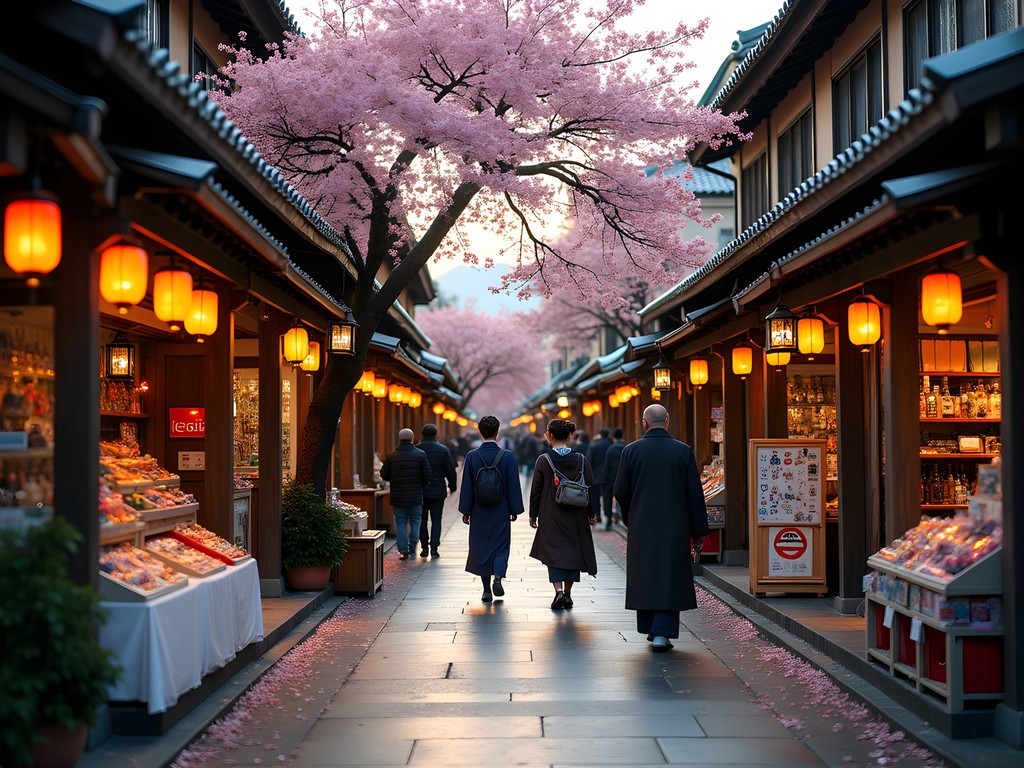
💡 Pro Tips
- Visit Omotesando early morning or late afternoon to avoid tour groups that typically arrive mid-day
- Look for shops with the actual craftsperson working on-site for more authentic pieces
- Don't hesitate to ask about the history and meaning behind traditional designs – most shop owners are proud to share their knowledge
Wooden Treasures: Miyajima's Signature Craft
If you know anything about Japanese craftsmanship, you've likely heard of Miyajima's wooden products. What hockey sticks are to Canada, wooden crafts are to this island – a point of national pride and exceptional skill. The island's woodworkers have perfected their craft using primarily maple and cherry from the surrounding mountains.
The signature product is the rice scoop (shamoji), which has an interesting origin story tied to a Buddhist monk's dream. Legend aside, these handcrafted utensils are both beautiful and functional – I've been using mine for years at home, and they've become conversation starters during dinner parties. While machine-made versions are available everywhere for a few hundred yen, invest in a hand-carved piece from Miyajima Shamoji Workshop or one of the smaller family-run studios.
Beyond rice scoops, look for intricate wooden puzzle boxes (himitsu-bako), which make exceptional gifts. These require anywhere from 4 to 66 precise movements to open, with craftspeople carefully embedding different woods to create stunning geometric patterns. I purchased one on my first visit to Miyajima and still enjoy the mechanical satisfaction of solving it while on conference calls (camera off, of course).
For couples looking to invest in a truly special piece, consider the wooden chopstick rests (hashioki) or serving trays made from single pieces of maple. These items elevate any dining experience and develop a beautiful patina over years of use. I recommend Miyachiku workshop, where third-generation craftsman Hayashi-san creates pieces that balance traditional techniques with contemporary design sensibilities.
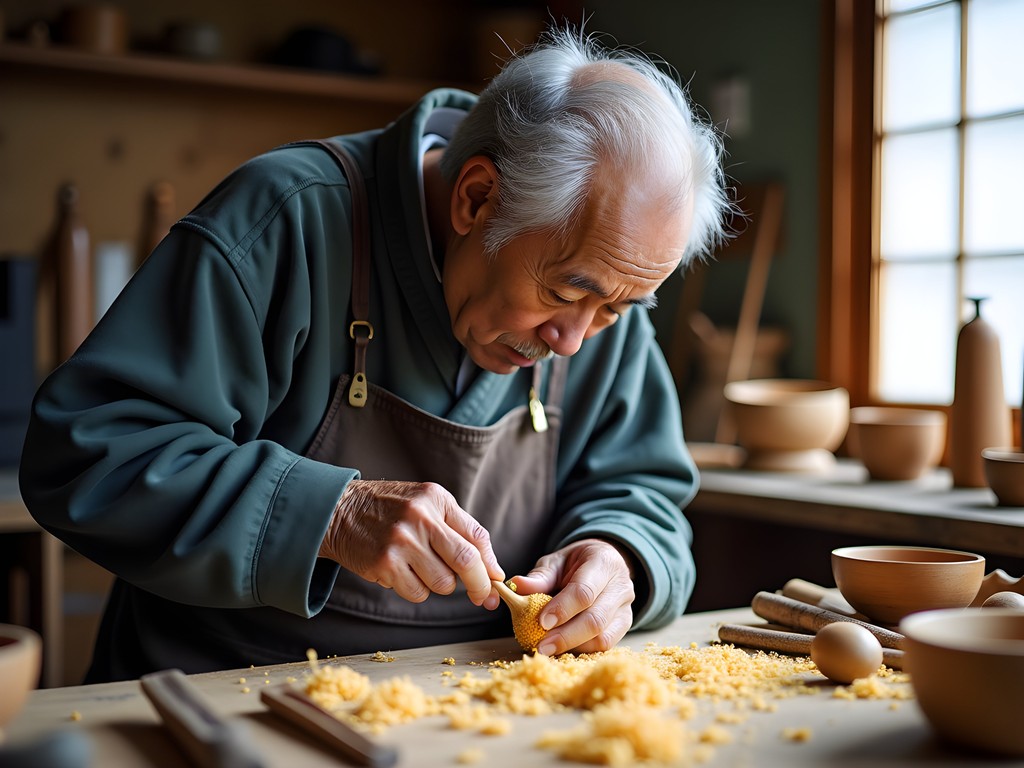
💡 Pro Tips
- Look for the official Miyajima wood craft certification mark to ensure authenticity
- Ask about proper care instructions – most pieces require occasional oiling with specific food-safe products
- Consider commissioning a custom piece with your names or a special date if you're celebrating an occasion
The Art of Miyajima Momiji Manju
Every region in Japan has its signature sweet, and Miyajima's claim to fame is the momiji manju – maple leaf-shaped cakes typically filled with sweet red bean paste. While technically an edible souvenir, the presentation and packaging of these treats elevates them to gift status.
If you're looking for the quintessential Miyajima experience, head to Fumimaro, where you can watch the entire production process through glass windows. The mesmerizing efficiency of their traditional cast iron molds reminds me of a well-executed power play – precise movements with perfect timing.
What makes shopping for momiji manju interesting for couples is the variety of flavors beyond the traditional anko (red bean paste). Modern variations include chocolate, custard, cheese, and my personal favorite, matcha. Most shops offer sampling, so you can conduct your own tasting tournament before committing to a box.
For a luxury experience, seek out Yamadaya near the five-story pagoda. Their limited edition seasonal flavors use premium ingredients like sakura in spring and chestnut in autumn. The elegant packaging makes these perfect gifts for colleagues or family back home.
If you're staying overnight on the island (which I highly recommend), consider picking up a Japanese tea set to properly enjoy your momiji manju back at your ryokan. There's something magical about sipping properly prepared matcha from handcrafted ceramics while overlooking the bay as the evening ferry traffic winds down.

💡 Pro Tips
- Buy momiji manju on your way OFF the island to ensure maximum freshness
- Most shops offer mixed boxes if you can't decide on a single flavor
- The premium gift boxes with wooden presentations are worth the splurge for special occasions
Luxury Tea Experiences & Ceramics
As someone who's equally comfortable discussing the merits of a perfect body check and the subtle notes in a properly brewed gyokuro, Miyajima's tea culture speaks to me on a profound level. The island offers several specialty tea shops that provide experiences well beyond what you'll find in tourist centers like Kyoto or Tokyo.
My top recommendation is Itsuki Tea House, tucked away on a side street near Daisho-in Temple. What makes this shop special isn't just their selection (though it's impressive) but their approach to education. The owner, Itsuki-san, spent years studying tea cultivation before opening his shop and offers tasting sessions for couples that transform how you'll think about Japanese tea forever.
For those serious about elevating their tea experience, invest in proper teaware while here. The island's ceramic traditions shine in the tea utensils available, particularly the handcrafted chawan (tea bowls) that capture the wabi-sabi aesthetic perfectly. I purchased my matcha set here three years ago, and it remains one of my most treasured souvenirs – both functional and beautiful.
Couples should consider booking the private tea ceremony and shopping experience at Kyonoya. For around ¥5,000 per person, you'll participate in a traditional ceremony followed by a guided shopping experience where the tea master helps you select utensils that complement your personal tea preferences. It's like having a professional scout help draft your perfect team of tea implements.
What I appreciate most about Miyajima's approach to tea culture is how it balances tradition with accessibility. Unlike some of Kyoto's more intimidating establishments, the island's tea merchants welcome questions and curiosity, making it perfect for couples at any knowledge level.
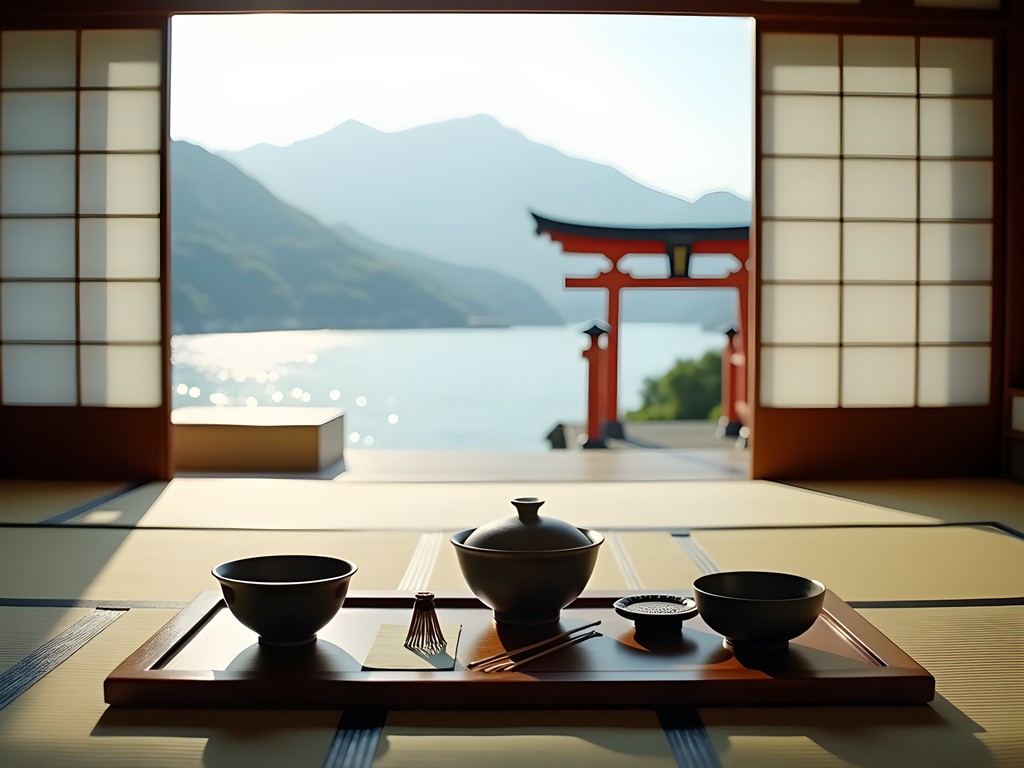
💡 Pro Tips
- Schedule tea experiences in advance, especially during cherry blossom season
- Consider the weight of ceramics when purchasing – quality pieces can be substantial to transport
- Ask for brewing instructions specific to the teas you purchase, as temperature and timing vary dramatically
Miyajima After Dark: Evening Shopping Experiences
Most day-trippers clear out of Miyajima by late afternoon, catching the last ferries back to Hiroshima. This mass exodus creates my favorite shopping window – the golden hours when the island reclaims its serene atmosphere and shops transition from daytime hustle to evening intimacy.
For couples staying overnight (which I cannot recommend strongly enough), the shopping experience transforms after 5pm. Many of the family-run businesses along the back streets near Machiya Street offer evening hours with a completely different ambiance. Lanterns illuminate storefronts, and without the crowds, proprietors have time for meaningful conversations about their crafts.
My favorite evening discovery is Miyajima Glass Studio, which keeps its furnaces running until 8pm. Watching the glassblowers create delicate sake cups and ornaments against the backdrop of night is mesmerizing. They offer a couples' experience where you can blow your own matching cups – a memorable souvenir that's worth the splurge at ¥8,000 per couple.
Another evening gem is Miyajima Bokusendo, specializing in traditional calligraphy supplies. The owner, Tanaka-san, offers impromptu demonstrations after hours and can create personalized name seals (hanko) while you wait. I've found that the traditional calligraphy set makes both an excellent souvenir and a meditative hobby to develop together as a couple.
Don't miss the small sake shop near Itsukushima Shrine that transitions into a tasting room after 6pm. For ¥1,500 per person, you can sample regional varieties paired with local snacks – the perfect prelude to dinner reservations at one of the island's ryokans.

💡 Pro Tips
- Book accommodation on the island to experience the evening shopping scene after day-trippers leave
- Bring cash for evening shopping as some smaller establishments don't accept cards after regular business hours
- Make appointments for custom items or experiences, as some craftspeople will stay open late by arrangement
Final Thoughts
Miyajima's shopping scene offers something increasingly rare in our mass-produced world – direct connection with artisans creating objects of lasting value and beauty. For couples seeking meaningful souvenirs that transcend typical tourist trinkets, this sacred island delivers experiences as memorable as the items you'll bring home. Whether you invest in a handcrafted tea set that will serve you for decades or simply select the perfect wooden rice scoop, shopping here becomes part of your shared travel narrative. I've found that the most valuable souvenirs aren't necessarily the most expensive, but rather those that continue to evoke memories long after you've returned home. When you use that Miyajima shamoji to serve rice at your dinner table years from now, you'll remember not just the island's floating torii, but the craftsperson's weathered hands shaping your treasure before your eyes. And isn't that what thoughtful travel shopping is truly about?
✨ Key Takeaways
- Stay overnight on the island to experience shopping without crowds and access evening artisan demonstrations
- Invest in one significant handcrafted item rather than multiple mass-produced souvenirs
- Engage with artisans directly to understand the cultural significance behind traditional crafts
📋 Practical Information
Best Time to Visit
Late March to early May (cherry blossom to early spring)
Budget Estimate
¥50,000-80,000 per couple for a weekend including accommodation and shopping
Recommended Duration
Overnight stay (minimum) or weekend (ideal)
Difficulty Level
Easy
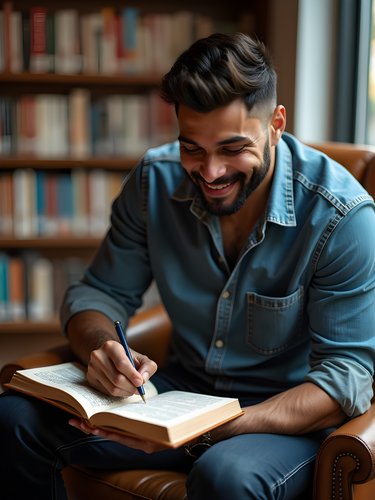

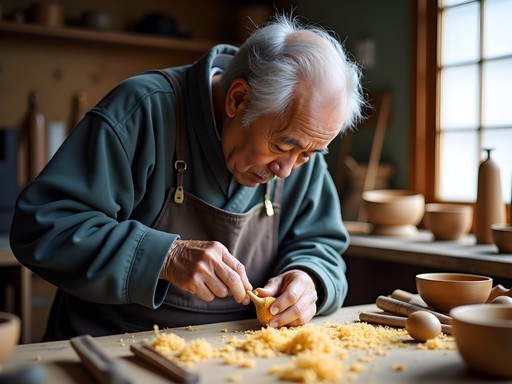
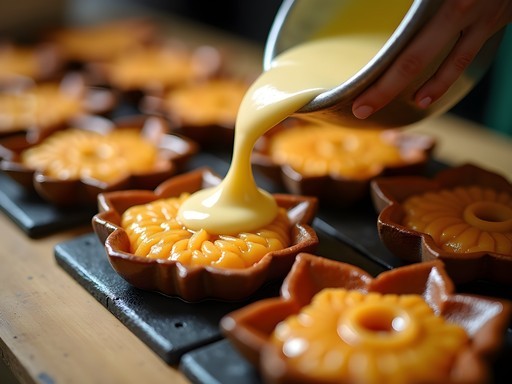
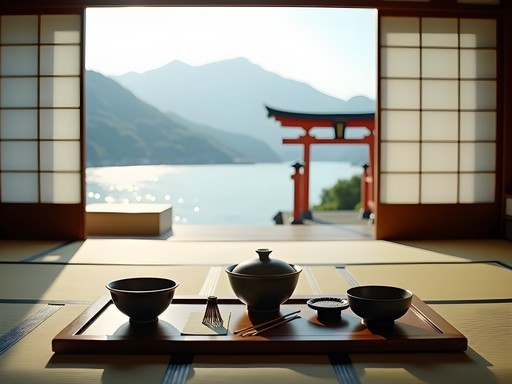




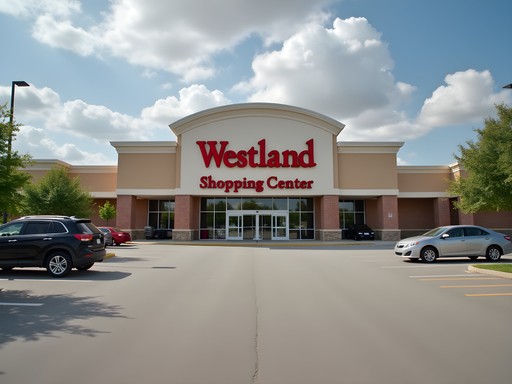


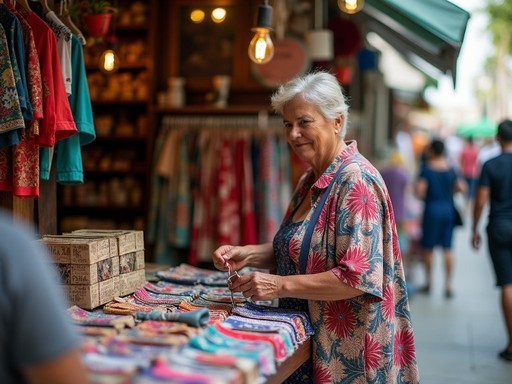
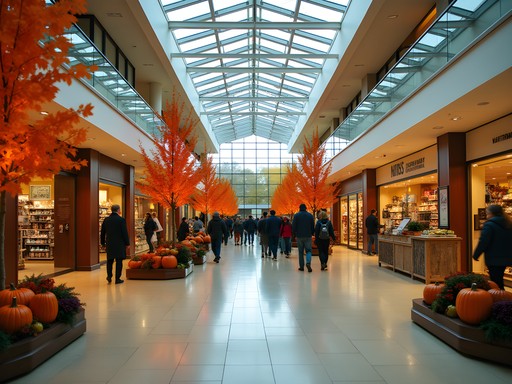


Comments
skyone
Just got back from Miyajima last week and this guide would have been so helpful! For anyone planning a visit - the ferry gets PACKED with tourists around 10am-2pm. We went super early (first ferry) and had Omotesando almost to ourselves for an hour. The shopkeepers were setting up and everything felt more authentic. Bought a beautiful wooden tea caddy from a shop at the far end of the street - the owner explained it was made from local maple and showed us how the lid creates a seal to keep tea fresh. Pricey but worth every yen!
cityexplorer
How long did you spend on the island? Trying to figure out if it's doable as a day trip or if I should stay overnight.
skyone
We did a day trip from Hiroshima and it was enough for shopping and seeing the main sights. But I kinda wish we'd stayed overnight - the island gets so peaceful after the day tourists leave. If you have time, do the overnight!
Hunter Thompson
100% stay overnight if you can! The evening and early morning views of the torii gate without crowds are magical. Plus you get first dibs on the fresh Momiji Manju in the morning! 😋
Hunter Thompson
This brings back memories! I backpacked through Japan last autumn and Miyajima was a highlight. Those Momiji Manju are ADDICTIVE - I must have tried every flavor! Pro tip for anyone going: visit the shops later in the afternoon when the day-trippers start heading back to the mainland. The shopkeepers are more relaxed and sometimes willing to chat about their craft. I spent an hour with an elderly woodworker who showed me how he carves those intricate designs. Didn't speak much English but the universal language of craftsmanship needed no translation! Also, I used my travel journal to collect stamps from different shops - makes for a brilliant souvenir.
skyone
What flavor of Momiji Manju would you recommend? I've heard the matcha ones are good but curious about others!
Hunter Thompson
Matcha is solid but the custard and red bean were my favorites! There's also a seasonal chestnut one that's amazing if you're lucky enough to visit in autumn.
cityexplorer
Great guide! Did you find the wooden rice scoops worth buying? I'm heading there next month and wondering if they're just tourist trinkets or actually useful.
Hunter Thompson
Not OP but I bought one last year and actually use it all the time! The craftsmanship is amazing and it doesn't scratch my non-stick pans. Definitely worth it!
cityexplorer
Thanks Hunter! That's exactly what I needed to know. Will definitely pick one up then.
coffeeexplorer
Love this guide! The wooden crafts look amazing. Adding this to my Japan bucket list!
bluegal
Just got back from Miyajima last week! Pro tip: most shops on Omotesando close around 5-6pm, but the deer hang around 24/7! Watch your shopping bags or those cute critters will help themselves to your souvenirs. Also, if you're into ceramics, there's a small pottery shop near the end of the shopping street (closer to the shrine) where the artist does demonstrations in the afternoon. His cups with the torii gate design are gorgeous and make perfect gifts. The momiji manju are definitely best eaten fresh - the custard ones are heavenly when still warm!
coffeeexplorer
Those deer are sneaky! One tried to eat my map 😂
luckywanderer
Anyone know if the shops accept credit cards? Or is it mostly cash only?
Ana Robinson
Many of the larger shops on Omotesando accept cards now, but the smaller artisan workshops are still cash-only. Always good to have yen on hand in Japan, especially in traditional areas like Miyajima!
Jean Wells
As someone living in Yokohama, I've visited Miyajima several times and find your shopping guide quite comprehensive, Robert. One addition I might suggest is exploring the smaller side streets off Omotesando, where you'll find less touristy shops with more authentic pricing. The Miyajima Traditional Crafts Center is also worth mentioning - they offer excellent workshops where visitors can make their own shamoji rice scoops under artisan guidance. For tea enthusiasts, Itsuki-do Tea Shop offers an exceptional selection of local blends that pair perfectly with momiji manju. I always recommend visitors bring a small collapsible shopping bag as you'll inevitably find more treasures than expected!
bluegal
Jean, those workshops sound amazing! Do you need to book them in advance or can you just walk in?
Jean Wells
For peak tourist seasons (cherry blossom and autumn leaves), I'd definitely recommend booking 2-3 days ahead. Off-season, you can often walk in, but it's still safer to reserve a spot the day before. Most accommodations in Hiroshima can help with bookings!
oceannomad
I visited Miyajima last year and the wooden crafts are absolutely worth the trip! I bought a rice scoop (shamoji) from an elderly craftsman who showed me how they're made. The one thing I regret is not buying more momiji manju to bring home - they were gone in a day! The maple leaf shape is so cute, and the different fillings were all delicious. My favorites were the custard and red bean ones. The deer were super friendly too, almost too friendly when I was trying to eat!
summerdiver
Great post! I'm heading to Japan next month and thinking of adding Miyajima to my itinerary. How much time would you recommend spending there just for shopping? Is it doable as a day trip from Hiroshima?
Robert Webb
Absolutely doable as a day trip! The ferry from Hiroshima only takes about 10 minutes. I'd recommend at least 4-5 hours to explore the shopping areas properly, especially if you want to chat with artisans. Morning is less crowded on Omotesando Street.
summerdiver
Thanks so much for the quick response! Morning it is then!
sunnywalker
Are the momiji manju cakes good souvenirs or do they spoil quickly? Want to bring some home!
tripwanderer
They only last about a week. But some shops sell vacuum-sealed versions that last longer. The traditional ones are best eaten fresh though!
Venture X
Premium card with 2X miles, $300 travel credit, Priority Pass